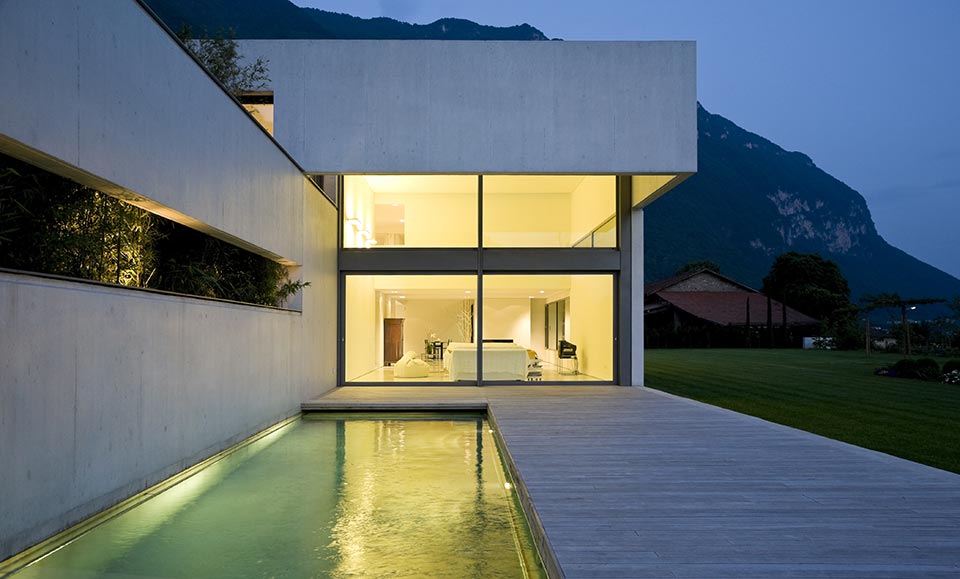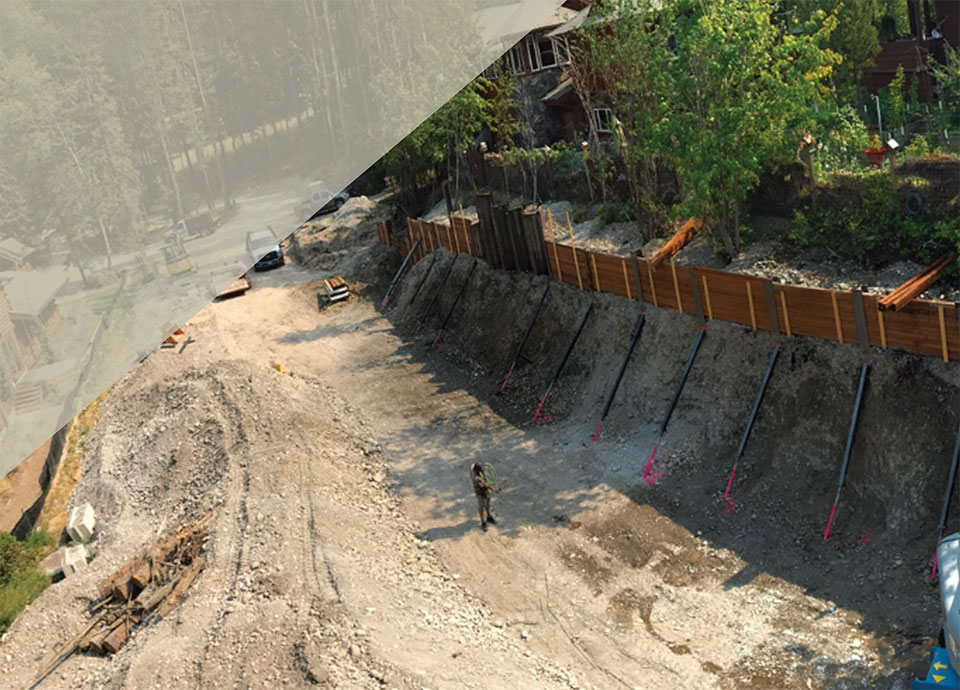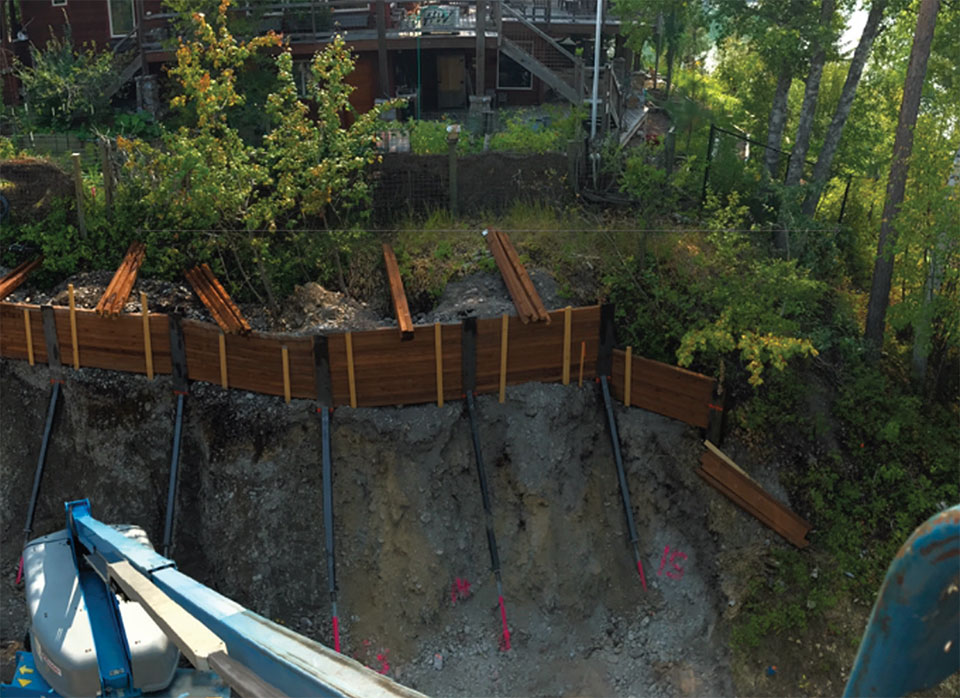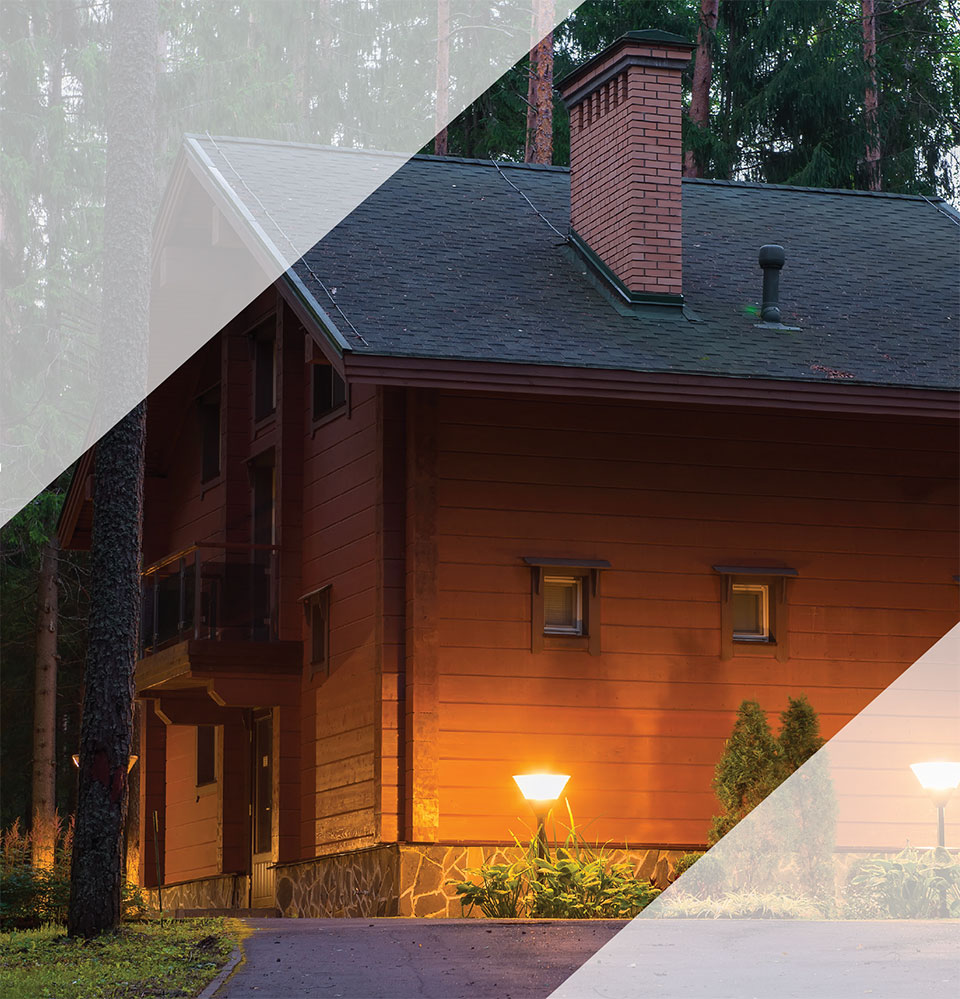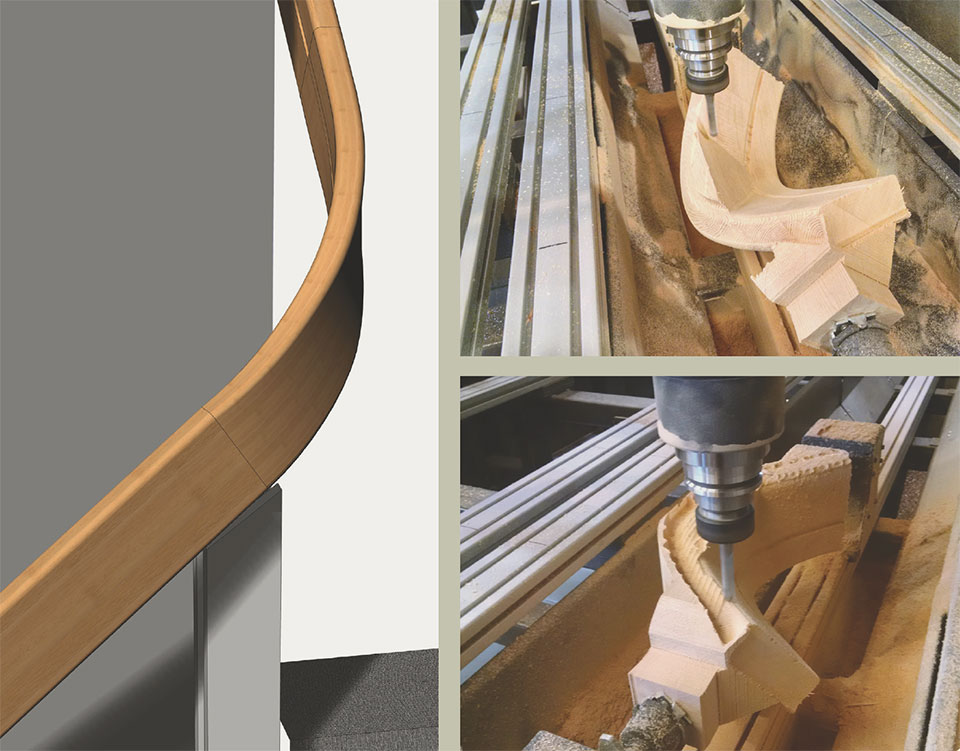For almost a century, little has changed in the way homes have been built, but now, building science is leading homebuilding into a new era.
A hundred-year-old or more Craftsman or Victorian home might seem a normal sight in today’s neighborhoods. However, how normal would a Model T or horse and buggy look? Technology has driven transportation incredibly far forward, so much so that people can identify the age of a photo by cars, and a new Tesla easily announces today’s date. Homebuilding has eluded dramatic technical advancements—at least until recently.
Enhanced Performance
Dave Radatti, a principal at Mindful Designs, a design-build firm in Whitefish, explains the progression of homes to become healthier, more energy-wise, and longer lasting, and the changes in aesthetics for local home designs. In his career, he has watched building science increasingly influence how Mindful Designs builds, and designs, including projects with partner architects.
While many builders have adapted to learn new methods to meet building and energy codes, Radatti and his two partners, Jason Pohlman and Marty Beale, moved west from Upstate New York and Maine with backgrounds in sustainability, building science, and construction in harsh environments with the intention of incorporating their training, knowledge, and values into a new company. The firm’s name, Mindful Designs, Incorporated, has its roots in the trio’s plans to create a design-build company with a focus on responsible development.
“We use the word mindful to signify that anything you do to build a home can be done with more thought and awareness,” explains Radatti. “Based on building science, we build tight, well thought-out products, where our homes have high-performance assemblies hidden behind the walls. People recognize their benefits when they see energy bills are lower, acoustics are better, heating is even, and there is more fresh air in the home. One family even said that their home ‘feels like a temple.’”
So what is within a home that we might not see that creates the experiential differences in daily living? Insulation, while important, is just a small part of the system. “Air tightness is a major focus with high performance design and construction. We design and build as tight a building envelope as possible,” notes Radatti. “There is no simple answer as to how we do it. Our most typical response to an inquiry regarding building science is, ‘it depends,’ with solutions always being situational, varying from home to home.”
Since 2000, there have been advances in materials that are available in the construction of exterior wall assemblies. Dave Radatti explains, “There are many ways to build a high performance wall assembly. Sometimes, for example, we will design and build a vapor-permeable exterior wall system, allowing moisture and vapor to pass through the wall and to the outside. There are many nuances to properly executing something like this. For instance, cladding needs to be installed with an air channel called a rain screen, which is located between it and the continuous insulation that blankets the home outside of the sheathing.”
Radatti goes on to explain, that when done properly, the air channel encourages the movement of moisture and vapor to the exterior. As a result, it dries out a wall assembly that has accumulated moisture throughout the heating season, an inevitable occurrence when building in the local climate.
“Unfortunately,” Radatti continues, “Building wall and roof assemblies with more insulation and a higher degree of air tightness means structures are more prone to mold, mildew, and poor air quality than with earlier draftier homes. There is no single formula that we adhere to; each of our custom home designs is unique while different owners bring different priorities to our attention. For so many reasons, each situation calls for its own evaluation, and with the complexity involved in what we do, no two solutions ever seem to be the same. However, the goal of a healthy home remains.”
He explains that systems for fresh air (HRVs) recover the heat from stale exhausted air to warm fresh air from the outdoors in a continuous cycle. “HRVs are something we prescribe for each of our custom builds. They are crucial for balancing the equation for a home built to a high standard of air tightness,” Radatti clarifies.
“We use the word mindful to signify that anything you do to build a home can be done with more thought and awareness. Based on building science, we build tight, well thought-out products, where our homes have high-performance assemblies hidden behind the walls. People recognize their benefits when they see energy bills are lower, acoustics are better, heating is even, and there is more fresh air in the home. One family even said that their home ‘feels like a temple.’”
–Dave Radatti, Principal, Mindful Designs
“I continue to ask questions and learn as I explore specific issues. Not a day goes by where I don’t learn something about both basic and advanced principals. With an industry that never stops evolving, it is important that we are always as up to date as possible to make the most out of our opportunity to build a better future.”
–Dave Radatti, Principal, Mindful Designs
While Radatti and his partners began with solid backgrounds in building science, they find there is always more to learn. “One of the first important steps we all made as early professionals was completing the Home Builders Association’s certified green builder program. This established a great foundation to our never-ending quest to master building science for our era. Our experiences in formal education established the practice of continually asking questions and seeking answers to them. We have been hard at it for 15 years. We are getting better and know we are on the right track with our Whole House Approach. Since it is never practical to assign everything that we could to a home design in an ideal world, we try to focus on first prioritizing things that will make the biggest difference given the situation.” He adds that they all regularly research available literature, and have found the studies by building science guru Joseph Lstiburek, PhD, PE., especially valuable.
“I continue to ask questions and learn as I explore specific issues. Not a day goes by where I don’t learn something about both basic and advanced principals. With an industry that never stops evolving, it is important that we are always as up to date as possible to make the most out of our opportunity to build a better future.”
At this point in time, best building practices often exceed the minimum allowances set by building codes. As a result, homes on the market similarly sized may not have comparable performance or durability. At this point in time, Radatti doesn’t see home values set to reflect increased efficiency, build quality, and life expectancy. “It would be good if the codes would be updated to reflect higher standards.” As it stands, homeowners go through a dialogue with Mindful Designs about what is important to them and how much they want to spend on various aspects of the project, the starting point in determining a program for each project.
“I think that with more knowledge, there will be better policies at all levels. Right now we are doing what we can and we are trying to be leaders until better building practices become more commonplace. When it does, a heftier demand on the building products we use will mean better prices for us, and we will return the savings on to the homeowners.”
With this in flux, does this mean for complicated conversations with clients? Radatti disagrees. “If asked for my opinion, I answer what I would do if it were my home and my family. We proceed from there.”
“I think that with more knowledge, there will be better policies at all levels. Right now we are doing what we can and we are trying to be leaders until better building practices become more commonplace. When it does, a heftier demand on the building products we use will mean better prices for us, and we will return the savings on to the homeowners.”
–Dave Radatti, Principal, Mindful Designs
Technology Moves Ahead
Most people in the local building community would agree that home controls and automation are the fastest shifts driven by technology. Not so long ago, every light fixture and home entertainment device had its own on-and-off switch or remote. It’s not so any more.
Russ Vukonich, one of three dynamic principals behind Eyehear Technology Group (ETG) in Kalispell, started in home technology as a specialist in security and has been with ETG as home technology has rocketed in importance and the expanse of home operations it manages. The biggest recent change he has seen is in controls. “Traditional home automation systems have evolved to offer control via apps on smart phones and tablets.” He goes on to explain, “Even less-expensive security systems can automate various aspects never before possible in mainstream, middle-end homes, like control over cameras, door locks, garage door openers, heating & cooling, and sprinkler systems, to name a few.”
Vukonich and colleague Mike Foster agree that constant change and innovation keep them interested in the field. “We have been doing business in the Flathead Valley for over 12 years, and we are constantly researching new products, attending trainings, and expanding our technical knowledge and skills.” As far as services, Foster and Vukonich list a broad spectrum: design, installation, project management, programming, maintenance, and support services for automation solutions. Summing up, they serve clients from concept to final installation and then provide service, plus they are available to add and program new equipment.
Services have expanded, so while ETG has its roots in audio/video and home theaters, security systems, and lighting, it has grown to provide whole home integration. Also, clients have become more conscious of energy use and want to take measures to improve homes’ performance. “Energy management is definitely highly desired,” agrees Vukonich, as he mentions the frequency that he programs scheduled events with HVAC systems intended to reduce energy consumption. “Remote control by smart devices offers clients the ability to set a schedule and to change it on the fly with an app. Lighting control is now being requested more and more, and it offers infinite possibilities.”
Lighting is an area where technology can save energy and money while adding convenience. “LED energy-saving lights are the rage and are the standard replacement for incandescent bulbs across the residential spectrum. Lighting systems are rapidly evolving to adapt to LEDs by providing dimming and other desired features,” explains Vukonich. “This offers the potential for huge energy savings when paired with occupancy schedules. We can easily task exterior lighting, which has high-energy draw, to dusk-to-dawn auto schedules. Also, placing occupancy sensors in rooms turn lights down or off depending upon movement, and it can really impact the energy bill. Kids don’t have to remember to turn off all the lights as move around the home.”
Technology also has the ability to control sunlight by optimizing it for warmth and light and minimizing it to prevent overheating rooms or causing glare. Russ Vukonich explains that motorized or manual shading mitigates solar gain and prevents interior possessions from fading due to direct sunlight. In many instances, shading can be done on the interior or exterior. “Blackout shades in bedroom areas to prevent early morning sunrises from disrupting sleep,” he adds.
He continues, “As I touched on earlier, a system can be designed to integrate the heating/cooling with the shades or motorized windows to coordinate activity schedules or key actions to outside temperatures. Energy management for second homes can be critical for utility bills but it also provides a healthier environment for full-time occupants.”
“We can easily task exterior lighting, which has high-energy draw, to dusk-to-dawn auto schedules. Also, placing occupancy sensors in rooms turn lights down or off depending upon movement, and it can really impact the energy bill. Kids don’t have to remember to turn off all the lights as move around the home.”
–Russ Vukonich, Principal, Eyehear Technology Group
Sensors play an important role in detecting temperatures for managing heating, cooling, and shading, but sensors are also important for home security, as Vukonich details. “We can tie cameras and motion sensors to send homeowners notifications of movement, and install driveway sensors that trigger pathway lighting or send alerts to homeowners of an approaching vehicle. This feature can be important on big estate lots.”
With ETG’s position in the community as home technology experts, they are accustomed the questions about what’s new and next, and Vukonich graciously answers. “Anticipate greater flexibility to control more and more devices in the home remotely. This will include notifications to and from service providers about issues or troubles. Also, look for wireless distribution of music and video throughout the home.” With so much going through the home network, does this offer any concerns? “A home’s network is the first doorway for automation so the ability of the network to meet the demand of the devices in the home is part of the design process. Expecting a home to provide a high level of automation means there should be a corresponding high Internet speed to the premises and high-quality networking equipment in the home. Installing a low-cost router from a discount store to serve as the traffic manager of the network isn’t the best pathway in a highly automated home.”
“Expecting a home to provide a high level of automation means there should be a corresponding high Internet speed to the premises and high-quality networking equipment in the home.”
–Russ Vukonich, Principal, Eyehear Technology Group
The complexity and interrelatedness of systems stress the importance of working with a home automation specialist. How does ETG work with clients so the technology doesn’t overwhelm them? “Typically we try to arrange a meeting with the clients and team—possibly their builder, architect, and interior designer— to a fact-finding initial step to get everyone working immediately from the same page. Once clients’ comfort levels and desires for automation and technology become clearer, then the budget aspect gets involved. Essentially we try to serve as a knowledge base for clients to ping ideas, and get frank answers. Then we help them determine the roadmap to the goal. No client is ever happy if they are oversold technology solutions that they don’t know how to use. Familiarization and service after the installation are critical to getting the most out of the investment in technology,” Vukonich answers.
Artistry Draws on Technology
“Craftsmen and artists live for clients who want to do something different.”
–Bill Amaya, Owner, Beyond Wood
Watching Bill Amaya create a stairway is like experiencing a sculptor who knows his medium intimately. His hands merge his visions with the living quality of wood to create original, functional, and exacting forms. His roots are in old-world craftsmanship, and he takes his artful traditional skills forward by using the most advanced applications of 3D drafting and imaging technology, along with robotics.
“It’s a revolutionary change,” says Amaya, as he shows an intricate basket-weave pattern to be used as a ventilation grid. “I can create unique, one-of-a-kind forms and make them affordable and doable.” In an era where there are few skilled carvers and woodworkers at Amaya’s level, such a screen would normally take weeks of his time.
To enable him to create detailed carvings with precise dimensions, Amaya enlists a robot and operates it through programming he has developed. “It would not be possible without 3D designs and plans,” he explains. Amaya’s woodworking robot can work along five axes and ten directions: up, down, right, left, in, and out, plus the robot can modify the angle of approach right and left and rotate clockwise or counterclockwise. Through programmed commands, the robot can change bits, cuts, and rotation. “While it would take many, many years to train someone to carve at this level, I can train someone in a much shorter time to work the robot.”
One of the biggest benefits Amaya has discovered of the 3D programs is team collaboration through screen sharing. “Aesthetics are very important, and I can work with homeowners, general contractors, architects, and interior designers through screen sharing where I present 3D images of the design. They react with their ideas of how we can improve it, and I can modify the design as they watch. They can view designs from all angles, as well as seeing how one aspect will fit in with the whole.” This screen-share collaboration process allows Amaya to work with anyone around the country or around the world. “And the work is the finest quality,” Amaya adds. “Working in 3D design is working in reality.”
Amaya’s company, Beyond Wood, builds cabinets, stairways, and handrails, but it is much more than a cabinet company. As his reputation grows, he is also sought-after for design and digital fabrication, especially troubleshooting complex jobs. He offers a story of a recent commission. “I was approached to replace some leaky windows. The window design was curvilinear, the wall protruded along yet another series of curves, making the windows double-curved. I recorded dimensions with my digital measuring device, drew 3D plans, and sent them to the manufacturer in another state. I created the wooden window frames and verified that the dimensions of the delivered glass were correct. The installation for 60 windows went perfectly, and my frames and the windows fit exactly, error-free. Without 3D plans and images, I don’t think it could ever have happened!”
Amaya finds that clients respond strongly to 3D plans. “Many of us in the construction trades have over 20 years of experience reading two-dimensional plans, but understanding and visualizing plans are difficult for homeowners. They react strongly to seeing their homes in 3D and it connects them and inspires them to go be creative and innovative so that their home becomes even more personal and closer to their aesthetics. Craftsmen and artists live for clients who want to do something different.”
